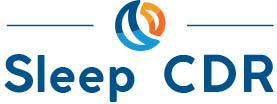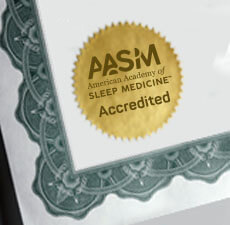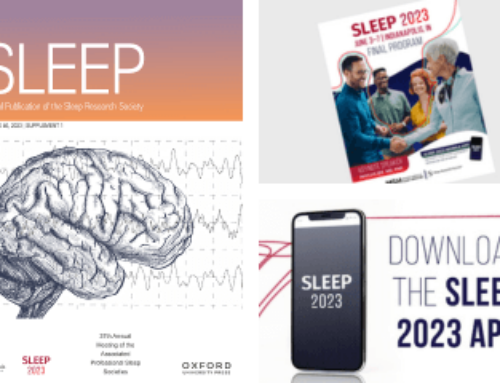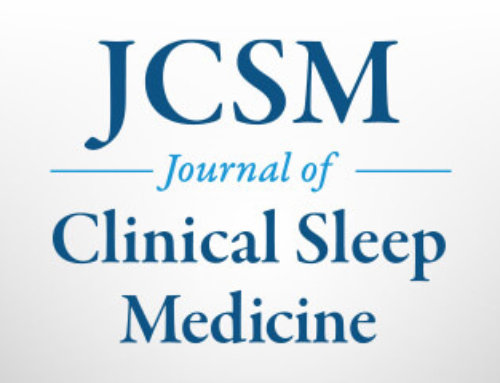EMBARGOED FOR RELEASE
June 9, 2008, at 12:01 a.m.
CONTACT:
Kathleen McCann
(708) 492-0930, ext. 9316
WESTCHESTER, Ill. – Psychological factors, rather than disease severity and objective physiological indices, are most important in a patient’s decision to adhere to continuous positive airway pressure (CPAP) therapy for the treatment of obstructive sleep apnea (OSA), according to a research abstract that will be presented on Monday at SLEEP 2008, the 22nd Annual Meeting of the Associated Professional Sleep Societies (APSS).
The study, authored by Simon S. Smith, of Queensland University of Technology in Carseldine, Victoria, Australia, tested a Health Beliefs Model of adherence to CPAP. It focused on 77 consecutive patients newly diagnosed with OSA. The subjects, who had never tried CPAP before, completed questionnaires at the outset, prior to CPAP treatment. The questionnaires assessed the outcome expectancy with treatment, self-efficacy, functional outcomes of sleepiness, and perceived risk of negative health outcomes. Physiological data from a standard polysomnogram, or sleep study, was obtained. CPAP adherence was assessed at three months post-treatment initiation.
According to the results, the Health Beliefs Model measures alone explained 21.8 percent of the variance in CPAP adherence. The Health Beliefs Model measures plus biomedical indices together explained 31.8 percent of the variance in CPAP adherence. The greatest proportion of CPAP adherence was explained by higher outcome expectancies with treatment, greater functional limitations as a result of sleepiness, and lower risk perception.
“OSA is a serious and common disorder. It has high public health and social costs. CPAP therapy can be very effective in treating OSA. Unfortunately adherence to the treatment is often poor. Biomedical factors, such as disease severity, don’t seem to explain this adherence problem. Our study looked at psychological factors, such as the impact of OSA on lifestyle, and beliefs about the effects of CPAP treatment,” said Smith. “We found that these Health Beliefs factors explained more than 20 percent of the variance in adherence. Importantly, we found this before patients had even used CPAP. This tells us that patients have developed beliefs and expectations about their health, even before they have tried CPAP treatment. We may be able to improve adherence to CPAP, and improve the treatment of OSA, by addressing some of these health beliefs directly.”
OSA is a sleep-related breathing disorder that causes your body to stop breathing during sleep. OSA occurs when the tissue in the back of the throat collapses and blocks the airway. This keeps air from getting into the lungs. It is estimated that four percent of men and two percent of women have OSA, and millions more remain undiagnosed.
On average, most adults need seven to eight hours of nightly sleep to feel alert and well-rested.
The American Academy of Sleep Medicine (AASM) offers the following tips on how to get a good night’s sleep:
- Follow a consistent bedtime routine.
- Establish a relaxing setting at bedtime.
- Get a full night’s sleep every night.
- Avoid foods or drinks that contain caffeine, as well as any medicine that has a stimulant, prior to bedtime.
- Do not go to bed hungry, but don’t eat a big meal before bedtime either.
- Avoid any rigorous exercise within six hours of your bedtime.
- Make your bedroom quiet, dark and a little bit cool.
- Get up at the same time every morning.
First introduced as a treatment option for sleep apnea in 1981, CPAP is the most common and effective treatment for OSA. CPAP provides a steady stream of pressurized air to patients through a mask that they wear during sleep. This airflow keeps the airway open, preventing the pauses in breathing that characterize sleep apnea and restoring normal oxygen levels.
CPAP Central (www.SleepEducation.com/CPAPCentral), a Web site created by the AASM, provides the public with comprehensive, accurate and reliable information about CPAP. CPAP Central includes expanded information about OSA and CPAP, including how OSA is diagnosed, the function of CPAP, the benefits of CPAP and an overview of what to expect when beginning CPAP, the position of experts on CPAP, and tools for success. CPAP Central also features an interactive slide set that educates the public about the warning signs of OSA.
Those who think they might have OSA, or another sleep disorder, are urged to consult with their primary care physician or a sleep specialist.
More information about OSA is available from the AASM at https://www.SleepEducation.com/Disorder.aspx?id=7.
The annual SLEEP meeting brings together an international body of 5,000 leading researchers and clinicians in the field of sleep medicine to present and discuss new findings and medical developments related to sleep and sleep disorders.
More than 1,150 research abstracts will be presented at the SLEEP meeting, a joint venture of the AASM and the Sleep Research Society. The three-and-a-half-day scientific meeting will bring to light new findings that enhance the understanding of the processes of sleep and aid the diagnosis and treatment of sleep disorders such as insomnia, narcolepsy and sleep apnea.
SleepEducation.com, a patient education Web site created by the AASM, provides information about various sleep disorders, the forms of treatment available, recent news on the topic of sleep, sleep studies that have been conducted and a listing of sleep facilities.
Abstract Title: Predicting CPAP Adherence before Experience with CPAP
Presentation Date: Monday, June 9
Category: Sleep Related Breathing Disorders
Abstract ID: 0539
# # #








